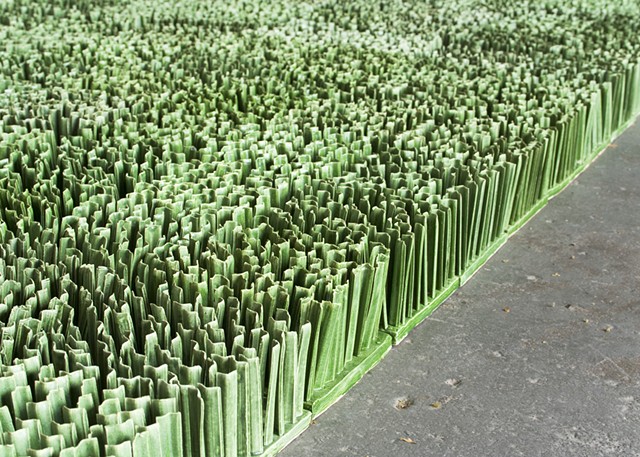Short Artist Talk about my porcelain grass projects:
https://vimeo.com/174413407
I return again and again to the landscape—its shifting terrains, wild edges, and cultivated plots—as a site of wonder and inquiry. Forest understories, suburban lawns, formal gardens, and urban greenways all carry traces of the values and histories that shape them. Within these living archives, I find patterns of resilience and adaptation as well as loss and decline—echoes of our own human values and experiences. My work translates these observations into sculptural forms, reminding us that landscapes are dynamic records of both human and natural histories.
Clay is my primary material, valued for its origins in the earth and its ability to record touch, time, and transformation. I often build through repetition, shaping thousands of hand-formed elements that gather into larger installations. These works evoke organic rhythms found in freshly cut grass, clustered vegetation, or topographic contours, while smaller sculptures and image-based pieces emerge from close observation, photography, and archival research. Some works celebrate the natural tones of clay, while others are enriched with glazes and stains that deepen surface and shadow. Ranging from lyrical to uneasy, my work reflects our entanglement with the natural world and the fragile balance we carry forward.
